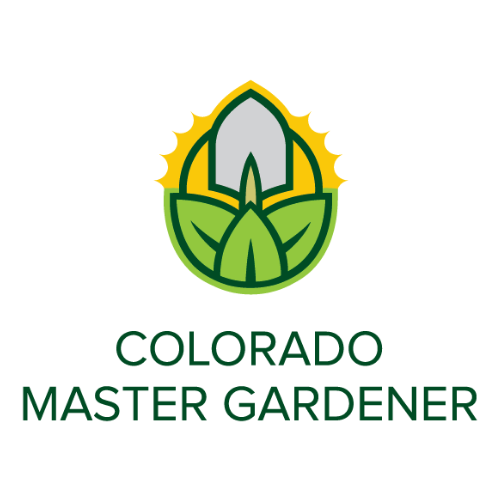Come visit the garden!
- Cheyenne-Arapaho Park is located at 9200 E Iowa Ave, Denver, CO 80247.
- CO Master Gardener hours Tuesdays 8:00 a.m. – 10:00 p.m. All other days will be 1 hour shifts to water. Please attend a brief training at the beginning hour of Tuesday or Friday on your first watering shift. This is a hand water only garden.
- Contact us: By Email or phone at 303-730-1920.
The garden is not open to the public; however, the public is welcome to come during these hours to ask questions and chat. This is a demonstration garden that will focus on education, conduct informative growing demonstrations, and focused topic learning presentations open to gardeners and the public. QR codes will be available to inform and follow progress online on this webpage.
This is a collaborative project between Arapahoe County Open Space, Denver Urban Gardens, and CO Master Gardener program. If you are interested in renting a plot, please contact DUG.
2024 Summary
In 2024, the season began with Arapahoe County Colorado Master Gardeners maintaining 3 large plots and 1 raised bed in this DUG managed garden. We decided to use the 3 plots to show 3 different gardening processes.
One plot was used to show the differences between regenerative gardening and non-regenerative gardening. Seeds were planted in rows across the whole plot, with a walkway separating the regenerative and non-regenerative sides so we could do side-by-side comparisons. Early in the season, we learned that the regenerative side did grow and produce more quickly than the non-regenerative side. As the season continued, we noticed the two sides began to even out in production. In the 2025 season we will expand the plot to be entirely regenerative for consistency in the plot’s production.

One plot was planned as a vegetable garden designed to display styles of planting (row, trellis, and block) in one plot. We were able to grow tomatoes, peppers, squash, cucumbers, pumpkins, leeks, and more. This garden was a great way to show the gardeners how much they could produce in a small space, using a variety of methods. We also renewed crops as they were harvested to show how to extend the season and how to maximize production.

The final plot was the most unique. We decided to show common gardening myths next to a control plant. For example, a tomato plant planted sideways versus a plant planted straight up and down. We wanted to show if the myths worked or not. We did learn that planting tomatoes sideways makes the stems stronger, and that trimming your tomatoes increases production. We learned that nasturtiums grow at the same rate whether you soak the seed for 24 hours before planting or not. We also learned that yelling at your basil does not change its overall growth. Some other myths we tested were watering cucumbers in the afternoon vs evening, carrots planted during a waxing vs. waning moon, eggplants and peppers planted with and without compost tea, and North to South planted rows of beans vs. East to West planted beans. This plot was our most fun and most productive, and we will be implementing some of what we learned in the 2025 season.

The raised bed managed by the Master Gardeners was of native wildflowers. Our purpose with this plot was to attract pollinators to an otherwise rather barren area of the park. In the coming season, we plan to incorporate more flowers in the plots themselves to bring pollinators in and to showcase how the plants can work together in a small home garden.

As the season went on there were several changes in the DUG garden, which lead to our Master Gardeners managing a donation plot with some community gardeners, and a half plot to demonstrate Fall gardening. We were able to grow and harvest several cold weather crops near the end of the season for donation from these plots.
With the addition of temporary demonstration gardens, our outreach with the gardeners and community lead us to hold more classes than initially planned to meet the requests of those sharing our garden. We added topics such as Fall Gardening and classes just for the children who played at the nearby playground. The children had an interest in the garden as a whole, so the donation plots were designed by DUG and Master Gardeners to give the children a place they could be and help with the garden in a more interactive way. The 2025 class line up reflects these same ideas of community engagement, covering requested topics at times that better suit the community, as well as the implementation of a Kids Gardening Class series. Overall we donated just under 900 lbs. of produce from the plots in 2024. We managed to cultivate relationships with, and provided information to, the other gardeners and the community. We look forward to the 2025 season.

Follow us on Facebook and Instagram.
Horticulture Resources
- Garden Buzz Archives
- CSU Extension Resources
- Colorado Master Gardener Program
- Foothills to Plains Native Plant Master Program
- Native Bee Watch Community Science Program
- The Co-Hort Blog
- PlantTalk Colorado
- Soil Testing
- Plant Select
- Emerald Ash Borer
- Japanese Beetle
- Colorado State Forest Service
- Ask an Expert




